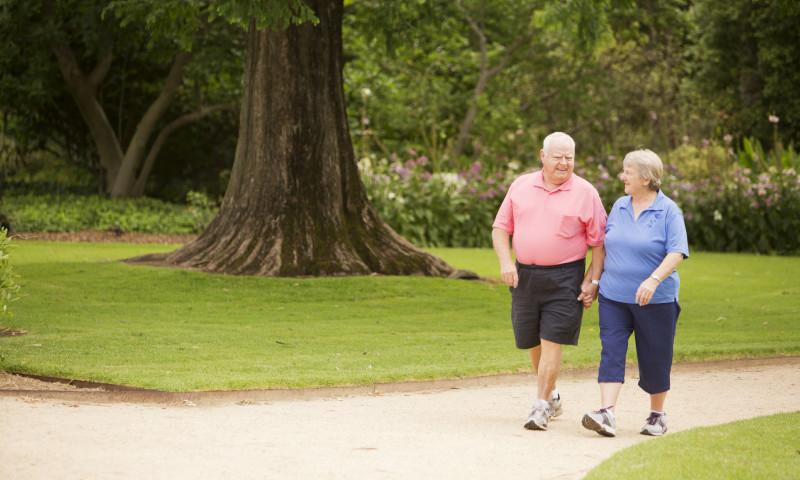Walking can be a great exercise to help you stay in shape, clear your head and manage your weight, but did you know that it can also be an opportunity for you to meditate and become in-tune with your body?
“Walking meditation is ‘meditation and mindfulness in action,'” says Tracy Martinez, RN, BSN, CBN, a certified bariatric nurse and program director at Wittgrove Bariatric Center in La Jolla, Calif. “This combination can have both emotional and physical benefits. When you do walking meditation, you are using the mental, physical and emotional experiences of walking as you develop greater awareness in your life.”
So what are the benefits to walking meditation? Meditation provides benefits in the form of stress reduction, lowered blood pressure and many other health perks, Ms. Martinez says. What sets walking meditation apart from sitting meditation, however, you use your walking as the main focus, and this motion helps you become more aware of your body.
“One of the biggest differences between sitting and walking meditation is that it is often easier to be more focused and more easily aware of your body while doing walking meditation, compared to sitting forms of meditation practice,” she says. “When your body is in motion, it is generally easier for most people to be aware of it compared to when you are sitting still.”
Interested in trying out walking meditation? Check out these tips:
Tips to Begin Walking Meditation
Here are some steps to help you begin your meditation walking practice:
1. Stand up straight with your back upright but not stiff. Relax your shoulders. Feel how your feet feel as they are touching the ground and let your weight distribute evenly (it can take a few minutes to be aware of this). Be mindful of your breathing, without trying to control it. Allow the breath to come from the diaphragm (belly) and always make sure your breathing feels natural. Allow the breath to become rhythmic and fluid.
2. Fold your hands and let them fall in front of you. This creates some balance for you and keeps your swinging arms from being a distraction.
3. Drop your gaze slightly. This helps you maintain focus. Some people find closing your eyelids half way helps them focus. Slightly smile and let all worry, internal chatter and any sadness fall away from you as you walk.
4. Step out with your left foot. Feel it swing, feel the heel hit the ground, and the ball of your foot, and then the toes.
5. Feel the same as the right foot comes forward. You might want to use the traditional labeling of each step by internally saying “lifting, moving, placing” with each part of every step. This can help your mind focus and turn down the internal chatter.
6. Be mindful of your walking, make each step a gesture, so that you move in a state of grace. With your attention to your legs and feet, feel the sensations of each step. Feel the legs and feet tense as you lift the leg. Feel the movement of the leg as it swings through the air. Feel the contact of the foot with the ground.
7. There is no “right” or “wrong” experience. Just experience how it feels to you. Whenever you notice that the mind has wandered, bring it back to the sensations of your feet walking. Getting a sense of the rhythm of the steps may help maintain a continuity of awareness. Walk with slow, small, deliberate, balanced and graceful footsteps. Be aware of how your body feels as you are walking.
8. Walk at a steady pace, slightly slower than in daily life. When your attention wanders, bring it back to the sensations of your feet touching the ground. Let your body “take you for a walk.”
Want to learn more about walking meditation? Check out “Walking Meditation: A Mindful Approach to Exercise,” an article from the Spring issue of Your Weight Matters Magazine by CLICKING HERE.






